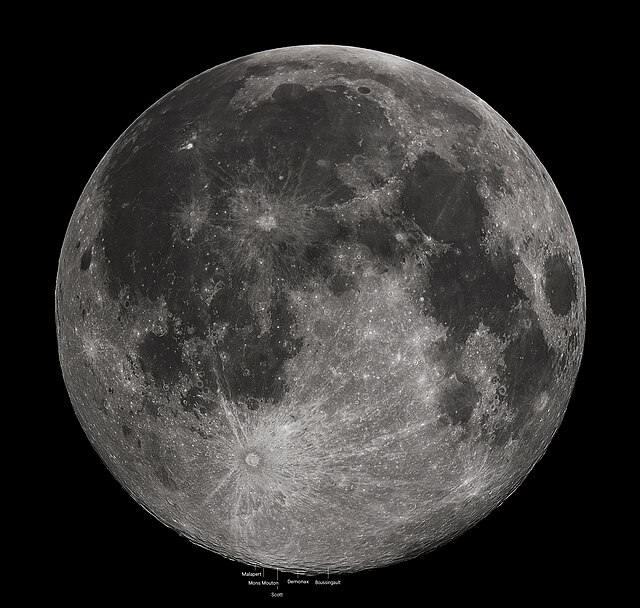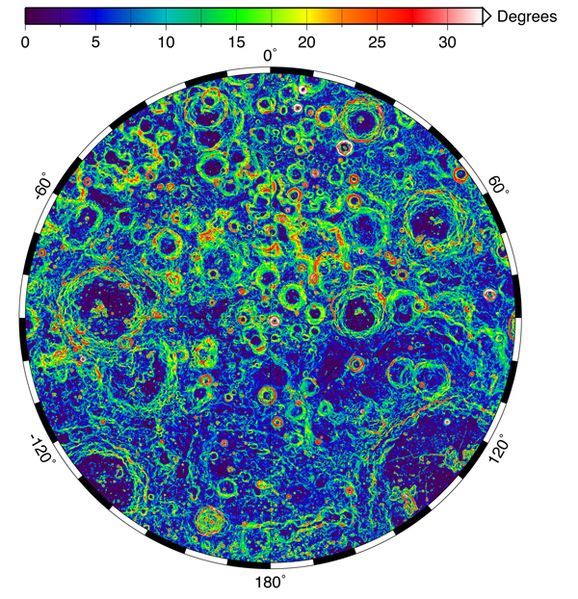Cabeus is a lunar impact crater that is located about 100 km (62 mi) from the south pole of the Moon. At this location the crater is seen obliquely from Earth, and it is almost perpetually in deep shadow due to lack of sunlight. Hence, not much detail can be seen of this crater, even from orbit. Through a telescope, this crater appears near the southern limb of the Moon, to the west of the crater Malapert and to the south-southwest of Newton.
Cabeus Crater (left) as imaged by the Diviner instrument on the Lunar Reconnaissance Orbiter.
Cabeus Crater.
The flash from the LCROSS Centaur impact.
Target area of the Centaur rocket at Cabeus crater.
The lunar south pole is the southernmost point on the Moon. It is of interest to scientists because of the occurrence of water ice in permanently shadowed areas around it. The lunar south pole region features craters that are unique in that the near-constant sunlight does not reach their interior. Such craters are cold traps that contain fossil record of hydrogen, water ice, and other volatiles dating from the early Solar System. In contrast, the lunar north pole region exhibits a much lower quantity of similarly sheltered craters.
The lunar south pole at the center of this image, situated on the rim of Shackleton Crater. Mosaic image created by LROC (Lunar Reconnaissance Orbiter) and ShadowCam
Full Moon with south polar region features marked
The several hundred kilometer wide Lunar south polar region as irradiated during summer. The south pole lies at the rim of Shackleton crater. The region is shadowed by the well illuminated Leibnitz plateau, flanked on the right by the Nobile crater and to the left by the partly shadowed Malapert crater and its Malapert peak illuminated at the rim of Haworth crater.
Degree of the slopes found near the south pole of the Moon







